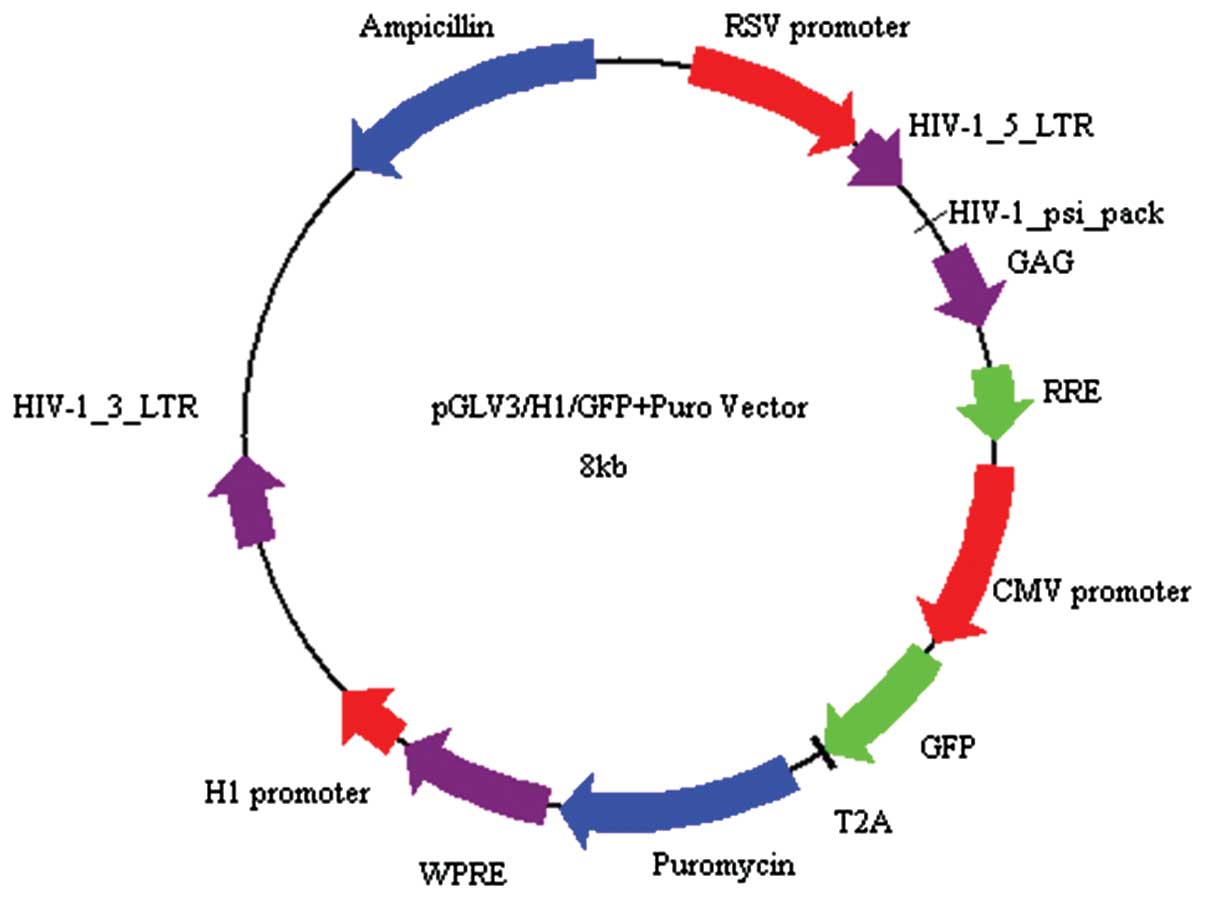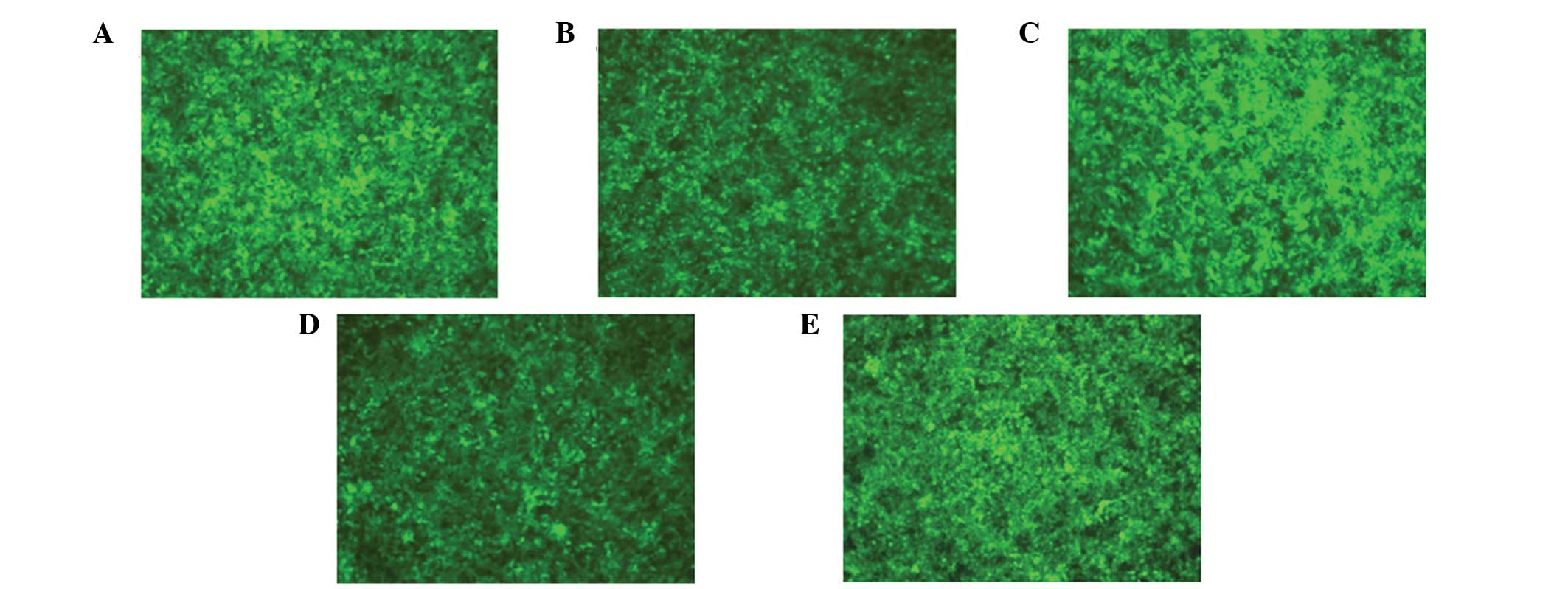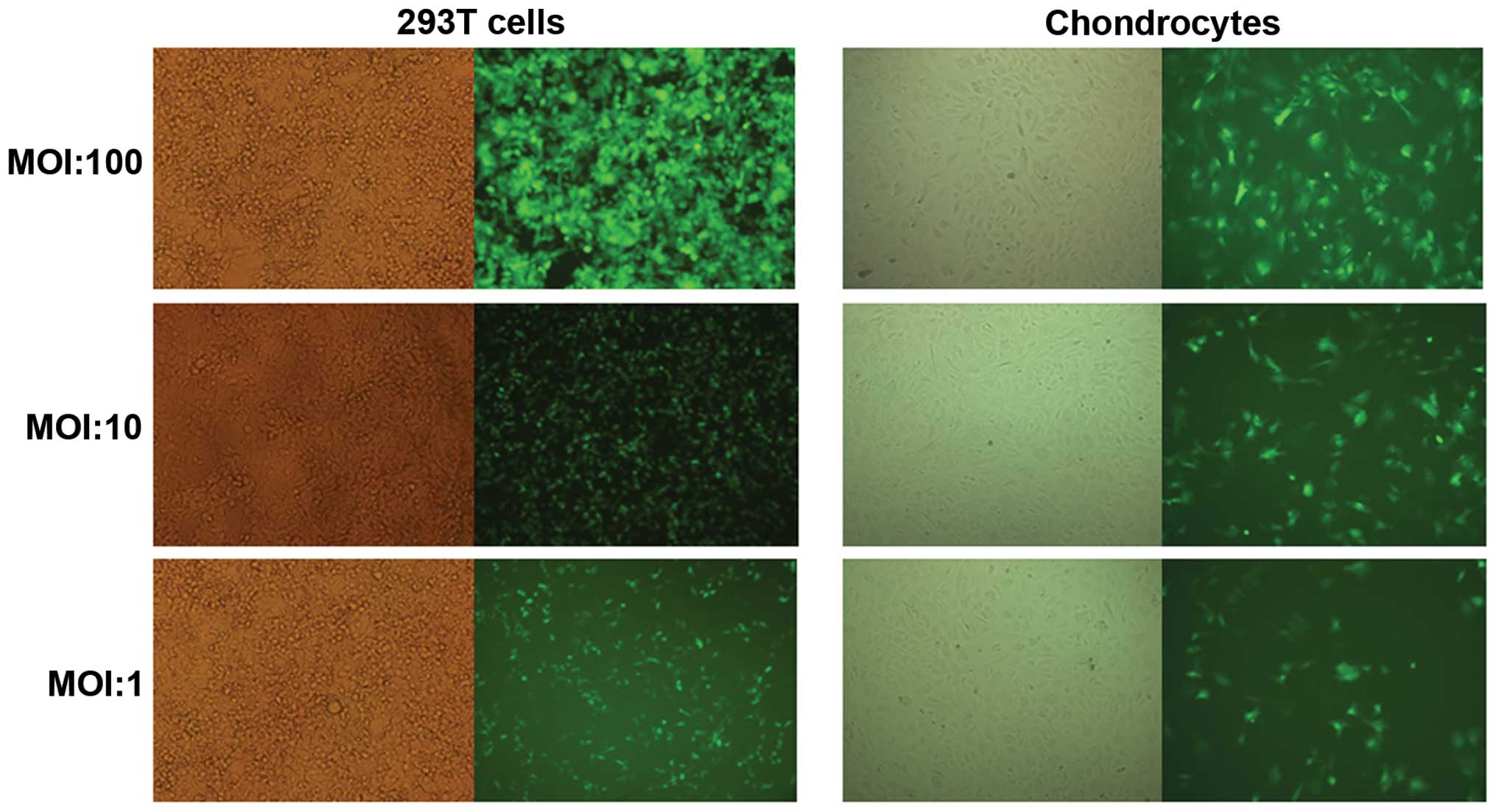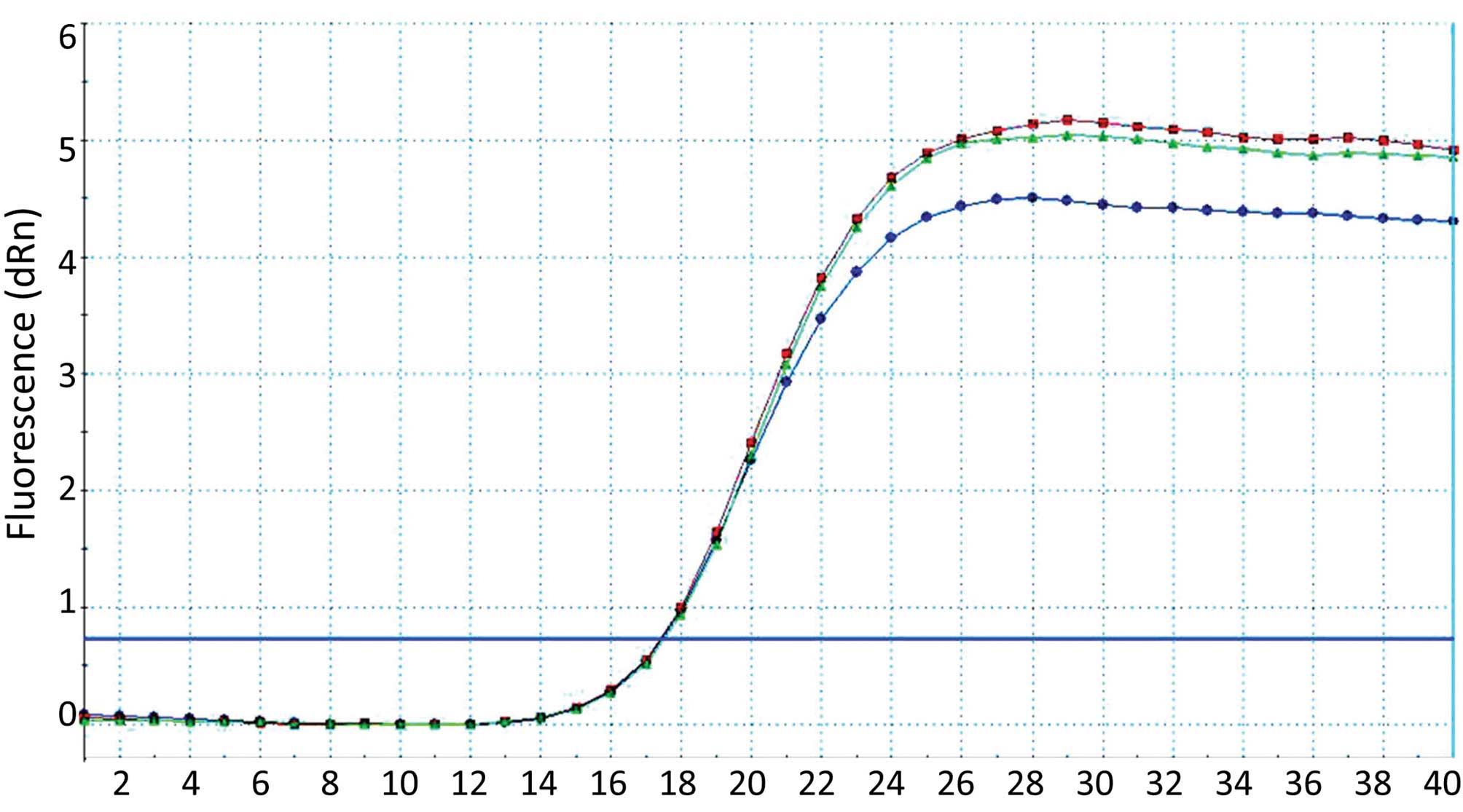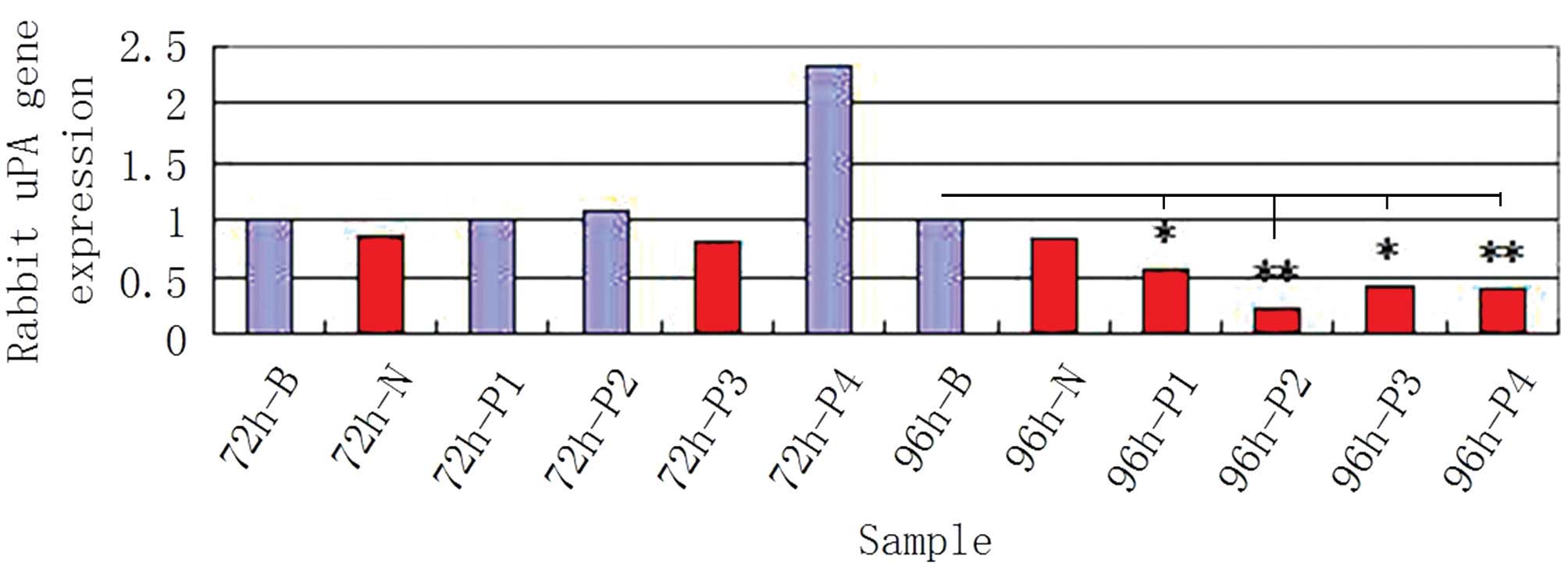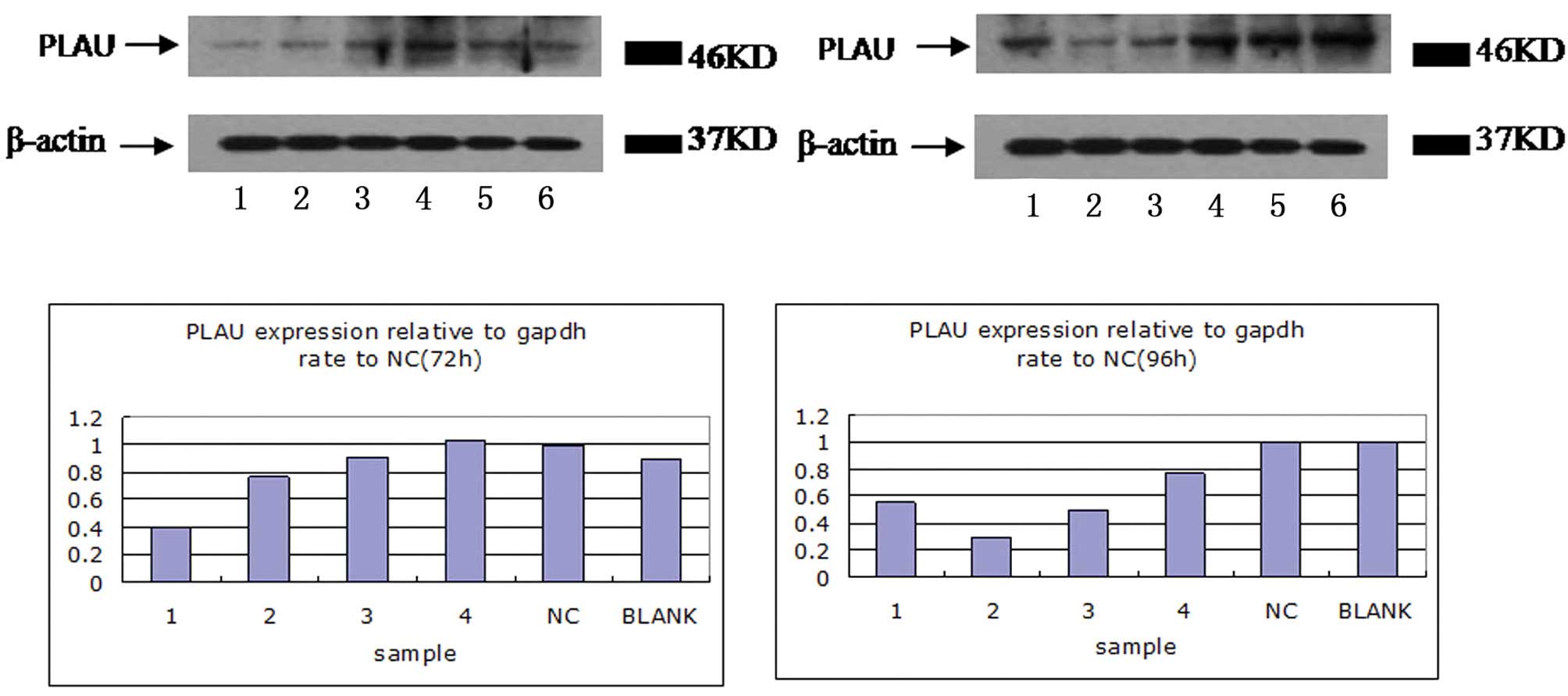Construction and verification of the targeted uPA‑shRNA lentiviral vector and evaluation of the transfection and silencing rate
- Authors:
- Published online on: May 28, 2014 https://doi.org/10.3892/etm.2014.1741
- Pages: 435-441
Metrics: Total
Views: 0 (Spandidos Publications: | PMC Statistics: )
Total PDF Downloads: 0 (Spandidos Publications: | PMC Statistics: )
Abstract
Urokinase‑type plasminogen activator (uPA) receptors, which are released by the synovial tissue, are responsible for the activation of cartilage‑breakdown proteases and play critical roles in cartilage degradation during the progression of osteoarthritis (OA). RNA interference (RNAi) technology has emerged as a potent tool to generate cellular knockdown phenotypes of a desired gene. The aims of the present study were to investigate the effect of siRNA specific to the uPA gene on chondrocytes and to investigate the possible mechanisms of OA. Firstly, four types of small hairpin RNA (shRNA) sequence (P1, P2, P3 and P4) were obtained from the targeted uPA gene of the New Zealand rabbit, based on siRNA theory. The sequences were designed, constructed and subjected to restriction enzyme digestion, transformation, polymerase chain reaction (PCR) identification, positive clone sequencing and lentivirus packaging. Secondly, primary culturing cartilage cells from the New Zealand rabbit were transfected with P1, P2, P3 or P4 to observe the transfection rate under a fluorescence microscope. The mRNA expression levels of uPA were analyzed in cartilage cells using quantitative PCR, while protein expression levels were analyzed in the cartilage cells using western blot technology. Four types of uPA‑shRNA lentiviral vectors were constructed successfully, which were all able to be transfected into the primary culturing cartilage cells. The transfection rate was as high as 85% when the multiplicity of infection was 100, which demonstrated that P1, P2, P3 and P4 were all capable of inhibiting the mRNA and protein expression of uPA in cartilage cells. In addition, among the four sequences, the P2 sequence exhibited the highest silencing rate of 70%. Statistical significance (P<0.05) was observed when analyzing the silencing rate of P2 compared to the other three groups. The most efficient targeted uPA‑shRNA sequence was identified following screening. The results strongly verified that siRNA lentiviral vectors can be transfected into cartilage cells to further inhibit the expression of the uPA gene efficiently and steadily. Thus, the results provide the foundation for further research on the role of uPA in the pathogenesis of OA.



